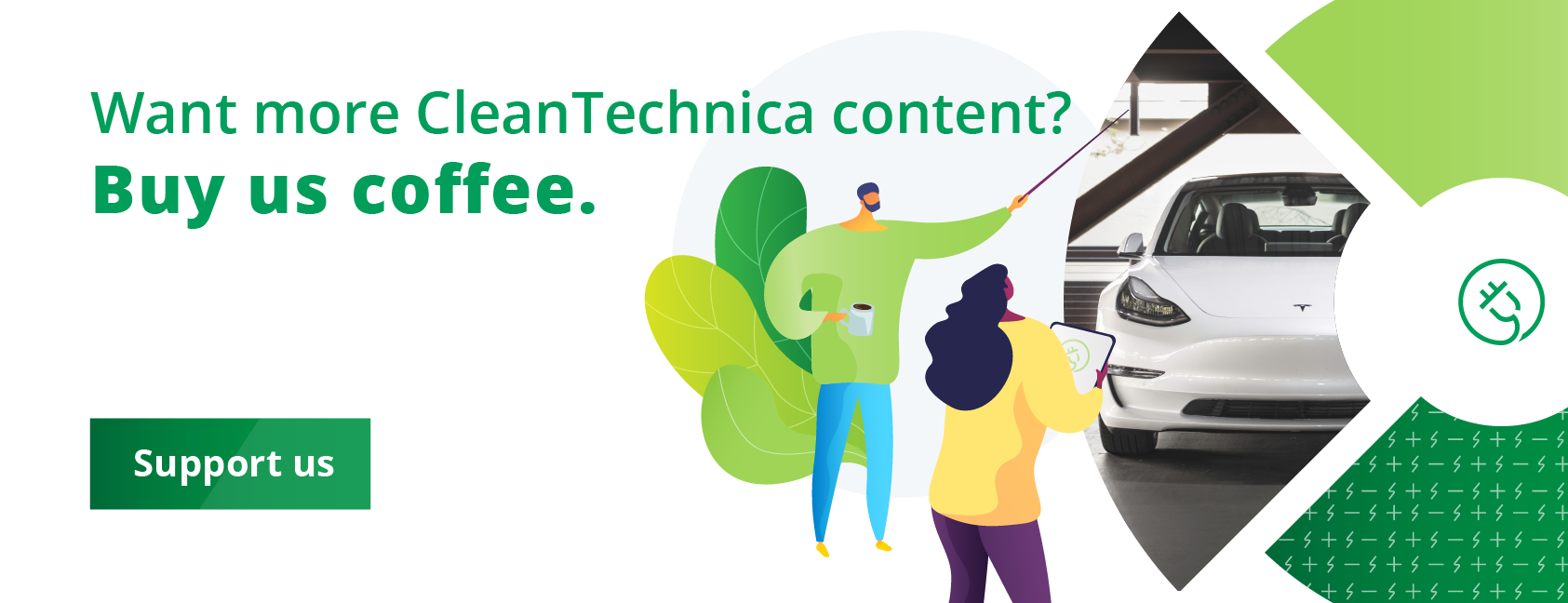
There was some good news out of the United Kingdom last week for a change, in that Cadent Gas abandoned its attempt to force hydrogen down the throats of its customers in the scenic seaside town of Whitby in Yorkshire. But paired with that is a remarkably tone-deaf ad by Mobil1, ExxonMobil’s engine oil division. Both are examples of legacy fossil fuel organizations getting consumer and public relations completely wrong due to their weird framing.
Before I dig into those examples, however, it’s worth revisiting a couple of other examples of the challenge I’ve published about recently.
The first one is the Methanol Institute. It’s the global lobbying arm for the US$32 billion wood alcohol industry. Methanol is an essential industrial feedstock, as it and its derivative products, including ascetic acid and formaldehyde, are used in acrylic plastic, synthetic fabrics and fibers used to make clothing, adhesives, paint, and plywood, and as a chemical agent in pharmaceuticals and agrichemicals. You’ll note what’s not included in that list: using it as a fuel.
Methanol manufacturing is a big global warming problem. It’s made from natural gas or coal gas, and emissions average about 4 tons of CO2e per ton of methanol. The annual market is 120 to 170 million tons, depending on source. That puts its global emissions at between 500 and 700 million tons of CO2e annually, or perhaps 1.5% of global annual CO2e emissions. You’d think that the entire focus of the world related to methanol would be abating those emissions first, but I have to hand it to the industry, they’ve managed to convince a lot of people that this climate change problem is the clean shipping fuel of the future.
You would think that they would leave well enough alone and treat the entire thing as the precious and delicate illusion of a flower that it is, but they stand up in public and say things that demand scrutiny, in front of people who tend to scrutinize things. Like me, for example.
A representative of one of the big methanol firms, Proman, which has a joint venture with Stena Lines around methanol for shipping, told an audience of Stena maritime technical professionals during a debate I was part of in Scotland recently that using unabated methanol was a good idea because it was lower emissions, that they shouldn’t worry about the product because the industry was going to produce green methanol in the future, and that they should trust the industry.
Proman shooting its own goals in the age of climate crisis is apparently something it leans into, as its website tagline that shows up in Google searches and on its masthead is “A global leader in natural gas derived products.” 1995 is calling and would like its branding back.
I wrote about Proman’s odd assertion a while ago, along with the average 5.6x CO2e emissions of unabated methanol compared to diesel, and when I published, the chief lobbyist for methanol, one Gregory Dolan, who has been CEO of the institute for a remarkable 27 years, tried to correct me about the reality that current unabated as cheap as it’s going to get methanol is more expensive than diesel and that I should fix my mistakes.
A bit of an unforced error, because this led me to do a global assessment of the cost of methanol compared to diesel per unit of energy, one which found that on average it is 1.6 times as expensive as a fuel and up to 2.2 times in one market, something that goes with its almost six times as much CO2e emissions as just using fossil fuels directly, like slime mold with axle grease on toast tips.
Now he’s promoting this 90-foot luxury catamaran article written up in rich-people’s toys magazine Robb Report as being virtuous because it makes hydrogen from methanol and then powers the yacht with the hydrogen, as if this thermodynamic absurdity and multiplication of the manufacturing emissions of methanol is a good and virtuous thing. Promoting rich people’s toys as a methanol win is a bit tone deaf in a world that’s currently experiencing unprecedented heat, fires, and flooding. But affluent old lobbyists aren’t known for being connected to reality.
This does, of course, go hand-in-hand with methanol giant Methanex’ claims to have done a 100% carbon neutral crossing of the Atlantic with a methanol-powered ship earlier this year. 100%? More like 96% unabated fossil methanol with 4% methanol from a landfill. Pro-tip: if you are trying to make your industry seem green and your product seem like a good choice for maritime decarbonization, you really should spend the money to do it right.
A.P. Møller – Mærsk A/S, the highest revenue shipping company in the world by a comfortable margin, whose owners are among the richest shipping firm owners in the world, have bought in to the methanol industry story. They’ve spent more on methanol shipping than any other concern, having 18 dual-fuel ships on order and multiple green methanol supply contracts inked. They’ll be receiving their first shipment of green methanol in 2024, a volume sufficient to power the ships for perhaps 1-2% of their voyages. If actually green methanol, it’s a start, although given how black methanol is I’d prefer that green methanol decarbonize their current industrial demand first.
Maersk is spending a lot of money on this, around US$15 million per ship on top of the roughly US$100 million cost for the basic ship. And green methanol won’t be cheap. Making 5,000 tons of methanol a day requires about 3,000 tons of reasonably pure methane a day. Landfill gas is about 50% methane, and one of the biggest landfills in the world only emits about 700 tons of it a day. Methanol manufacturing was scaled up from 2,000 to 3,000 ton per day plants for economics reasons, so scaling it down to something that might make 100-500 tons a day is going backward, regardless of how cheap the feedstock is.
Of course, intentional creation of high-global warming methane through anaerobic digestion of biomass is a big thing these days, although it’s a head-scratcher to me. Personally, I think we should be working to radically reduce methane emissions, not increasing them. But supposing waste biomass were used, what’s the volume there? Well, what claims to be the world’s largest anaerobic digestion facility is in San Jose, California, apparently intending to consume about 250,000 tons of organic waste a year, around 700 tons per day. That’s likely to produce about 10,000 tons of methane a year, or 30 per day. That’s enough for a tiny methanol facility, 1% of the scale of what is considered economic these days. That’s not going to be cheap either, regardless of how cheap the feedstock is.
And, of course, synthetic methanol made from green hydrogen will be even more expensive. While there are innumerable power-to-x proposals around, they all boil down to making green hydrogen, and that’s not going to be cheap. One of my clients noted that a proposal they’d received assumed that firmed 1.5 cent US per kWh electricity would be available 24/7/365. Electrolyzers are getting cheaper, but they won’t be cheap and will need to be replaced every decade or so. And the balance of plant is roughly 27 other industrial components which are already as cheap as they are going to get. Add on the balance of plant for methanol manufacturing, and that’s a bunch of other components which demand high-utilization.
Maersk is buying landfill-derived methanol for the maiden voyage of its first dual-fuel ship, a 2,100 container vessel that will be sailing from Ulsan, South Korea, to Denmark, so that’s good. But is the methanol being made in South Korea? No, it’s being made in the USA and shipped 10,000 km to South Korea. Is that because there are no landfills in South Korea? No, that’s silly. Is it because methanol isn’t manufactured in South Korea? Also silly. It’s just laziness on Maersk’s part to buy methanol that’s made in the United States to ship to South Korea to sail a dual-fuel ship to Denmark. It’s not like it doesn’t have the money to do this right, or that South Korean firms wouldn’t have been happy to help.
Personally, I suspect that the methanol side of those ships will be barely be used, and that biodiesel will fill up the other side of them in vastly greater quantities. It’s available in ports in millions of tons per year around the world already, after all. Still, Maersk’s methanol head-scratcher isn’t a biggie compared to others in this list, so I’ll give it a pass.
Another example is the International Civil Aviation Organization (ICAO), the UN organization with most nations of the world as members which is supposed to establish standards, regulations, and in theory at least address climate action. Its sibling, the UN International Maritime Organization (IMO), recently set some pretty good, if not perfect, targets for the industry’s decarbonization. Clear, acknowledging the scale of the problem and setting interim goals for 2030, 2040, and 2050.
I compared the two in an article, finding the ICAO’s published plans on its climate change page to be ludicrously bad by comparison. Basically, they were going to grow the industry massively with low-carbon alternatives, but maintain their current emissions, equal in reality to about 5% of the global warming emissions problem, untouched.
It turns out that they’d updated that late last year to goals which still actively ignored contrail heating forcing to aspirational recommendations to pretty-please clean up. They hadn’t bothered to update the front page of their website, their about page, or their climate action page to mention this update, which would have been pretty good in 1990, but in the 2020s amounts to noxious gaseous effluents.
Pretty much an own goal for an entitled organization. You’d think that once this had been pointed out and they noticed it, they would have been scrambling to update their website. The article went live almost a week ago. As I’m writing this, has the ICAO website’s climate page been updated? No, not it hasn’t. Perhaps they just haven’t seen the article. Sure, that must be it.
Well, no. One of their communication officers, in a fit of defensiveness, got snippy with me at the time in LinkedIn comments, including one in which I’d acknowledged that I’d missed the 2022 update and was going to look at it. You’d think that their first action would have been to fix their basic communication vehicle, but no. Instead he kept poking at someone who’d pointed out a big communications problem. I pointed out that his behavior broke some of the basic rules of professional communications, but he was having none of it. This, of course, led to me assessing the 2022 update and finding that it sucked too.
The own goals keep on mounting from fossil-fuel and fossil-adjacent industries. Am I done with the current list? No, no I’m not.
Next up we head to the United Kingdom, specifically to the northern end of it, Yorkshire, where Monty Python set a sketch about the bad old days when they were lucky to have a hole in a busy road as a home. The village of Whitby is a fetching little town of 13,000 or so, and famous for having the looming gothic wreck of an abbey that inspired Bram Stoker’s Dracula. Hmm… that’s a bit of a tone shift.
Into this idyllic little town with creepy undertones comes Cadent Gas, the natural gas utility in the region. They’ve been supplying gas via pipes for 200 hundred years, which appears to have given them the impression that they can do whatever they want to their customers.
And what they wanted to do was prevent the scourge of electrification by establishing Whitby as a hydrogen village, where pipes would bring clean burning hydrogen into people’s homes for heating and cooking. Nothing wrong with that except four times the risks of explosions and massive cost increases for energy. Oh, and the lack of any certified hydrogen furnaces and stoves. Oh, and the lack of any zoning approvals for hydrogen appliances. Oh, and none of the residents of the town wanting it. Oh, and the lack of any sense in the idea at all.
Jan Rosenow, Director, European Programmes at Regulatory Assistance Project and Honorary Research Associate at Oxford University, keeps track of the number of studies that have found that hydrogen for heat in homes is a brain-dead idea that shouldn’t be considered any more. His latest count is 43. As I noted, at least seven more are required to round it out to 50. And then another 50 to make 100, because you can’t be too sure that something is a bad idea just because it’s bleedingly obvious and 43 solid studies agree, with literally none even worth lining bird cages with from the pro-hydrogen side.
How did Cadent approach this public relations opportunity? Why, they attempted to force hydrogen on the owners. They refused to guarantee that rates wouldn’t go up after the trial. They refused to give people back their gas boilers or to install heat pumps if the hydrogen trial ended up the way it would have had it continued. They tried to get Parliament to pass a bill allowing Cadent and its ilk to enter residents’ homes without their approval to do it.
Basically Cadent acted as if the residents of Whitby were privileged to be serviced by the gas company, and as if it was entitled to do anything it wanted to its customers.
Understandably, the residents of Whitby, along with some help from heavyweights like Michael Liebreich and David Cebon, made it clear to Cadent that being unpaid guinea pigs for an ill-fated and dangerous experiment was not on. Now Cadent Gas has abandoned the plans for the village it never should have made in the first place. Of course the equivalently stupid sibling utility NGN is trying to push their Redcar hydrogen village rope uphill, and up in Scotland SGN is still trying to expose 300 Fife households to the glory that is hydrogen. More own goals coming.
I’ll give the natural gas utilities the tiniest bit of leeway. They are facing the very, very clear end of their entire business, and are acting as desperate organizations do. That’s why I make it clear that politicians, governmental agencies, and regulators have to help them to shut down gracefully. They will almost never do it themselves, instead performing increasingly unnatural acts in their attempt to stay in business at the climate’s, their customers’, and taxpayers’ expense.

Last in today’s roundup of fossil-fuel and fossil-adjacent organizations cocking up their public relations we have Mobil1. It’s the motor oil brand of ExxonMobil. It’s a division of a fossil fuel major. Anyone paying the slightest attention knows that the fossil fuel majors have been doing a great job making themselves look like the corporate villains in Bond and Mission Impossible movies, what with divesting all of their pretense of greening, seeing massive loss of big name green executives, and doubling down on their core business of delivering fossil fuels.
What has Mobil1 done that’s a PR own goal? Well, it decided it wanted to do a new ad campaign about how much freedom driving brings, to extol the virtues of the open road and its ability to connect people. Sounds heartwarming, doesn’t it?
Well, I encourage you to watch the results.
Ummm… anyone seeing a problem with this? Electricity bad, internal combustion engine good?
Lots and lots and lots of people are seeing this as an intentional anti-electric vehicle ad, because that’s what it looks like. Wires and electricity bound up with people having a horrible time, but in the sunshine an internal combustion car. And cutting the wires as the mother and daughter drive happily down the road.
Is that the intent? I really doubt it. When I saw the first 30-second version of it, I assumed it was a parody and expected to find a Snopes article indicating that it had been put out by some subversive content creator without Mobil1’s approval.
But no. I tracked this back to the press release from Mobil1. This dystopian electric nightmare from which only internal combustion engines powering cars driving on roads coated in a fossil fuel byproducts, asphalt, is intended seriously. Allow me to quote liberally from the press release.
“We dedicate this campaign to our most loyal Mobil 1 consumers,” explains Bryce Huschka, Consumer Marketing Manager, on behalf of Mobil 1. “For nearly 50 years, we’ve been talking about our incredible technology advancements, such as longer drain intervals and fuel economy savings. But we were reminded in our research that the consumers we want to reach are very different – they’re not all obsessed with the latest engine wear protection. What ties them together is their inspirational stories of what driving means to them.”
“As we sat down together to create the campaign, we each shared our version of the story – explaining how technology had crept further into our lives, and the rejuvenation that even a quick drive can bring to the soul,” shares Matt Pruett, Group Creative Director at advertising agency Martin Williams. “In one example, a father shared the story of his three-year-old coming home with a crayon family portrait showing him in front of a computer and smartphone. Developing this work caused a lot of us to examine our own relationships with technology and the impacts of being constantly connected.”
Yeah, at no point did the Mobil1 executives or their advertising company, Minnesota-based Martin Williams, ask “Hey, what will this look like to anyone involved in or even aware of, you know, the biggest and most rapid transformation of road transportation ever, electric cars?”
What they were trying to do is show that we are to tied to our phones and devices, and that going for a drive in a car (which usually these days has internet radio, connections for smart phones) is a great way to break free from those chains… err… electrical cables.
There’s probably a good idea in there trying to escape from a blinkered perspective. But they started with loyal Mobil1 customers, which is to say old people who have been buying engine oil for 50 years, likely don’t care about it, and mostly aren’t tied to smartphones 24/7/365. The ad is full of young, healthy, vibrant people unfairly shackled by all these heavy wires.
Who the heck is going to recognize themselves in this nonsense? How did it get past focus groups? Why didn’t Mobil1 and Martin Williams try to escape their blinkered, backward looking frame? Who knows.
Mobi1’s botched ‘breaking free’ ad is yet another own goal by the fossil-fuel and fossil-adjacent industry as they try to find ways to stay relevant in a world that is leaving them behind.
I don’t like paywalls. You don’t like paywalls. Who likes paywalls? Here at CleanTechnica, we implemented a limited paywall for a while, but it always felt wrong — and it was always tough to decide what we should put behind there. In theory, your most exclusive and best content goes behind a paywall. But then fewer people read it! We just don’t like paywalls, and so we’ve decided to ditch ours. Unfortunately, the media business is still a tough, cut-throat business with tiny margins. It’s a never-ending Olympic challenge to stay above water or even perhaps — gasp — grow. So …
Sign up for daily news updates from CleanTechnica on email. Or follow us on Google News!
Have a tip for CleanTechnica, want to advertise, or want to suggest a guest for our CleanTech Talk podcast? Contact us here.
Former Tesla Battery Expert Leading Lyten Into New Lithium-Sulfur Battery Era:
CleanTechnica uses affiliate links. See our policy here.




_(1).jpg)